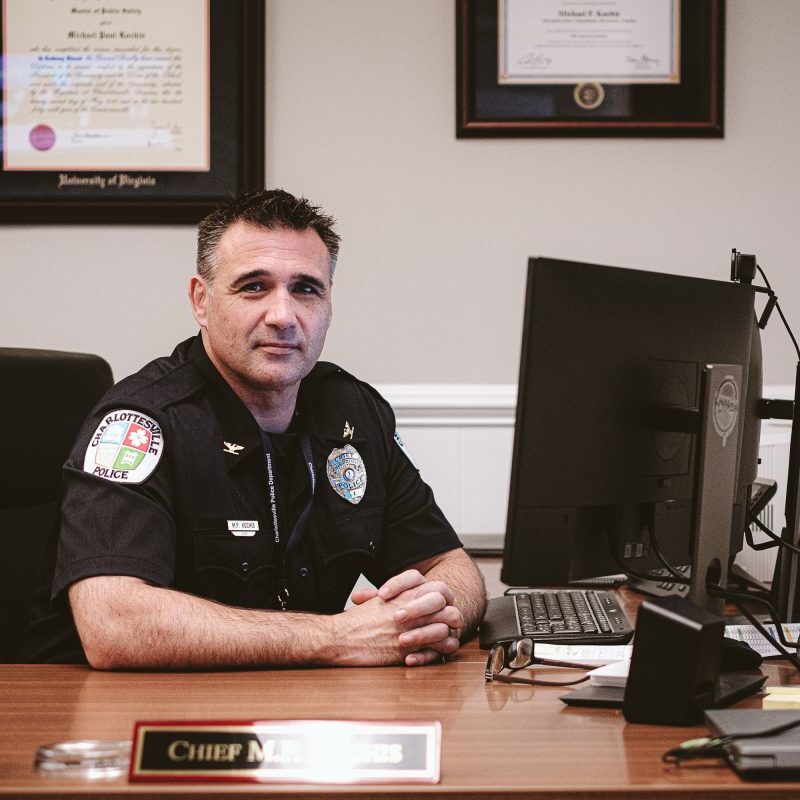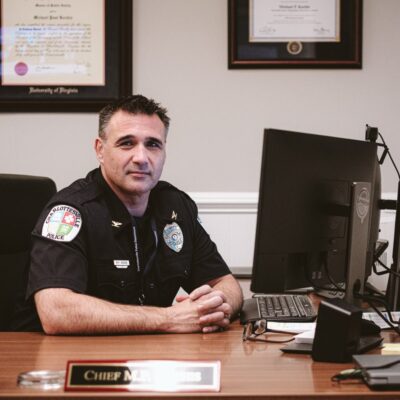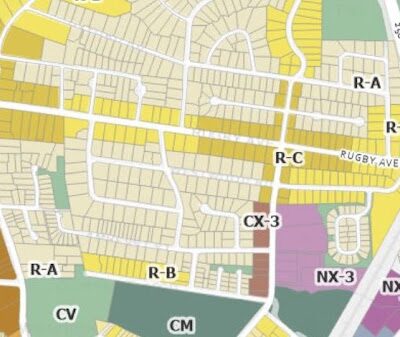| Previous coverage:
Design work continues for new dam Green groups splinter over water plan Flood of water repairs What a difference a day makes Water may be low, but blame’s high Flowing toward the future |
Flashback to 2005: After the worst drought on record and a whole lot of talk (and some misguided action) going back 30 years, it looked like there was a plan to expand the water supply that actually would work and satisfy a host of interests—developers who wanted water for the future, advocates who wanted better streamflows for aquatic critters, regulators who needed laws upheld, and ethicists and environmentalists who thought it best to use water from our watershed instead of drinking from the James River.
To top it off, the idea was brought up by a citizen at a public meeting, not from some bigbucks consultant. “Since it was such a simple idea, I thought someone else must have thought of it,” said Ridge Schuyler, Piedmont Program director at The Nature Conservancy, who was instrumental in conceiving the breakthrough component—a pipeline connecting the South Fork Rivanna Reservoir to the Ragged Mountain Reservoir. The Rivanna Water and Sewer Authority (RWSA) bought into the $143 million plan, which would provide for 2055 water demands and restore streamflows in the Moormans River. It was passed unanimously by City Council and the Board of Supervisors, cheered by regulators and environmentalists alike.
 Ridge Schuyler, Piedmont Program director at The Nature Conservancy, first proposed the key pipeline feature of the water supply plan. “I think that the benefit that the community is going to get out of this whole process is that it has refocused people on the need to do some maintenance dredging at South Fork,” says Schuyler. |
But some people have stopped cheering. At first, it was a handful of people, many with interests in either protecting the Ragged Mountain Reservoir as is or in stalling water supply expansion in order to check local growth. Then The Hook, a local weekly that had largely stayed away from reporting on the water supply plan, published a series of articles that depicted dredging as an alternative water supply solution that was intentionally undermined by local officials, consultants and The Nature Conservancy. Though the reporting was rife with comparisons that oversimplified the cost of long term dredging and overplayed the environmental and monetary impacts of the current plan, the coverage stirred up local concern, particularly among those who didn’t follow the water supply planning in 2005 and 2006.
Hence a three-hour City Council work session on May 6 in order to dredge up a lot of old issues before Council votes in June on increased water rates, which are expected to rise only gradually the first five years because of the water supply plan, but more dramatically after that.
Jeff Werner of the Piedmont Environmental Council knows most of the issues being raised in 2008 about the 50-year water supply plan—because he raised them in 2005, when fighting the idea of building a pipeline from the James River. But Werner stands by the current plan.
“Nothing that’s being said is new,” says Werner, who took a hard look at dredging in 2005, before the current plan was proposed. “I’m not saying that because it was said then, it shouldn’t be said now. But it got us to where we are, it got us to a plan that is really good. If there’s an argument, it had better be a new one and extremely compelling.”
There are some things that virtually everyone agrees on for a water supply plan. We need more water by 2055, though there are disputes about whether the additional amount is 9.9 million gallons per day (mgd) or 7.7mgd. The critics agree that it is best to keep the water supply in our watershed, rather than taking it from the James, which is likely to have more pollutants. And even RWSA Executive Director Tom Frederick says that the South Fork Rivanna Reservoir, which has lost at least 36 percent of its usable storage capacity since it was built in 1966 because of siltation, should be dredged.
Kevin Lynch, a former city councilor, once supported the water supply plan and voted for it in 2006 (he says he voted for the permit for the water supply plan, not for the plan itself; the Council agenda lists the item as the “long term water supply”). At the time, he said he supported the outcome and the recommendation as the least environmentally damaging one that will provide good local drinking water, according to City Council minutes. But he now contends chiefly that the RWSA and water supply consulting firm Gannett Fleming withheld information on the costs of dredging the South Fork Rivanna Reservoir.
“The big assumption that we were all working on was that dredging was prohibitively expensive,” Lynch says. “It was only after Freedom of Information requests to Rivanna that we found out that two dredging companies had contacted Rivanna because they believe it could be done for substantially cheaper.”
The biggest single issue is whether dredging the South Fork reservoir should be done only for maintenance reasons, or as part of the water supply plan. Dredging basically means sucking dirt from the bottom of the reservoir in order to restore capacity. But sucking dirt from the bottom is the easy part—the hard part of dredging is figuring out what to do with the dirt you suck out. There has to be some nearby site to dewater the material. Depending on the kind of material, it can then be sold, perhaps as fill for construction sites or as topsoil for farmers—otherwise, you have to pay to get rid of it.
One of the major drawbacks of dredging as part of the water supply plan is that it locks the community into dredging, regardless of whether the market is there to sell it. That makes the costs a lot more uncertain.
“The day you dredge [as part of the water supply plan], you have to keep dredging,” says Werner. “It initiates a long-term cost that doesn’t seem to be getting discussion in the community.”
A 2004 report from Gannett Fleming put the cost of moving five million cubic yards of sediment over 50 years—the amount necessary to restore and maintain 5.5mgd of capacity—as between $128 million and $145 million, depending on how much of the sediment could be sold. At a May 5 presentation, Chris Gibson of Gahagan & Bryant, an engineering consulting firm that handles dredging (though not water supply planning), criticized that number as being inflated. The Gahagan & Bryant consultants pitched their services to conduct dredging surveys on the South Fork for roughly $275,000.
Only one of the two unsolicited bids that RWSA received in 2004 would have been enough to dredge for the water supply plan. (Legally, RWSA can’t accept unsolicited bids.) Dock Doctors, Inc. submitted a proposal in 2004 to dredge the entire reservoir for $21 million. A 2005 memo from Gannett Fleming to Frederick identifies that proposal as “very brief” and notes that it doesn’t “disclose marketability in adequate detail.”
Werner doesn’t think that Dock Doctors’ $21 million makes sense. Indeed, even Gahagan & Bryant said that dredging alone—not including costs for removing fill—could reasonably run $7 per cubic yard, which comes to $35 million.
But Lynch believes that dredging the South Fork Rivanna Reservoir can be done for a significantly cheaper amount. In addition to dredging, he proposes scrapping the Ragged Mountain-South Fork pipeline, rebuilding the 81-year-old pipeline that connects Sugar Hollow Reservoir to Ragged Mountain, reconstituting the Mechums River pump station and raising the Ragged Mountain dam only 13′ instead of the 45′ that’s called for. Based on cost estimates in previous water supply planning reports, Lynch’s plan would be cheaper than the current one only if dredging costs are lower than about $45 million.
Werner doesn’t see that happening.
“We can ‘what if’ this thing to death,” Werner says. “I absolutely don’t believe that as part of the water supply plan you can dredge this reservoir, continuously keep the sediment out and do it for less than the current plan. I really don’t care if there’s an e-mail out there that portrays Gannett Fleming as bad. It doesn’t change the facts of all of this.”
 Kevin Lynch voted for the 2006 plan as a city councilor, but now says that water supply consulting firm Gannett Fleming withheld information on the costs of dredging the South Fork Rivanna Reservoir. The bottom line is to get a dredging study done now, he says. |
The Chamber of Commerce has reaffirmed its support of the water supply plan, as have Sally Thomas and Ken Boyd of the county Board of Supervisors. Supervisor Dennis Rooker says that RWSA should still get the current plan permitted—it’s still waiting on U.S. Army Corps of Engineers’ approval—but that maintenance dredging should be studied and possibly incorporated into the water supply plan in the future.
“I think that the benefit that the community is going to get out of this whole process is that it has refocused people on the need to do some maintenance dredging at South Fork,” says Schuyler. “And then the question we ought to tackle is, how this maintenance dredging should proceed, so when the market is good for the spoils, then we should be ready to take care of it.”
Lynch calls RWSA’s talk of maintenance dredging lip service: “Lip service is a step in the right direction, but it’s not a plan.” Like Rooker, he wants RWSA to spend the money for good dredging surveys.
Maintenance dredging aside, Schuyler thinks that it’s time for action. “One of the great things about living in this community is that it’s full of smart and dedicated citizens, and we reap the benefits of that when those smart and dedicated citizens come together to say there’s a better a way,” he said at the May 6 work session. “But we must admit that we suffer the consequences of having such a large and dedicated community because they’re always thinking of a better way. But at some point, you’ve got to say, it’s time to act. And in 2006, this community did act.”
The current plan
These are the components that make up the current water supply plan, based on the permit support document ratified in 2006 by City Council and the county Board of Supervisors.
| Item | Cost (in millions) |
| Raise dam 45′ | $24 |
| Pipeline between SFRR & Ragged Mtn | $35 |
| RMR to O-Hill pipeline | $8 |
| Observatory Hill upgrade | $20 |
| Subtotal | $87 |
| Engineering | $17 |
| Contingency (25%) | $26 |
| 50-year raw water pumping | $12 |
| Total | $143 |
C-VILLE welcomes news tips from readers. Send them to news@c-ville.com.





